Recovery Analysis and Maintenance Priority of Metro Networks Based on Importance Measure
Abstract
:1. Introduction
1.1. Background
1.2. Literature Reviews
1.3. Motivation and Contribution of This Paper
- A new recovery measure model for metro networks considering the value of recovery time is developed. The model combines performance analysis and cascading failure into metro networks.
- The node importance measure is used for setting maintenance prioritization of the metro network. A new node importance measure considering the value of recovery time is proposed.
- The Zhengzhou metro network is selected as a case study for performance analysis. The applicability and effectiveness of the proposed methods are verified.
2. Cascading Failure Model for Metro Networks
2.1. Metro Network Indicators
2.2. Cascading Failure Model
- (1)
- Initial load of nodes
- (2)
- Capacity of nodes
- (3)
- Distribution of node load
- Stage 1. Node 3 is attacked. Its state is changed from normal to failed. Node 3 is the initial failed node.
- Stage 2. The line connected to node 3 is interrupted. The load of node 3 is distributed to its neighboring nodes according to Equation (2). Here it is assumed to be assigned to node 4 and node 8.
- Stage 3. After taking the load of node 3, node 4 and node 8 are loaded with more than their capacity. Node 4 and node 8 overload into failed nodes, and the lines connected to them are interrupted. Their loads are distributed to their neighboring nodes according to Equation (3).
- Stage 4. Node 9 takes the load of node 8. Node 5 takes the load of node 4. The loads on both node 5 and node 9 are less than their capacity. No new failed nodes appear in the network and the cascading failure ends.
3. Recovery Analysis for Metro Networks
- Stage 1: Metro network normal operation
- Stage 2: Metro network cascading failure
- Stage 3: Metro network recovery
4. Maintenance Priority Based on Node Importance
- If , from the definition of the node performance importance, we can obtain that the performance of node after maintenance is greater than the performance of node after maintenance. It is expressed as . The node has a higher maintenance priority.
- If , from the definition of the node performance importance, we can obtain that the performance of node after maintenance is greater than the performance of node after maintenance. It is expressed as . The node has a higher maintenance priority.
- Step 1: Determine the full number of failed nodes due to cascading failures in the metro network, and their initial load.
- Step 2: Calculate the degree of each failure node. Calculate their maintenance time based on their degree.
- Step 3: Based on the time cost calculation formula of the node repair process, calculate the maintenance time cost of each failure node.
- Step 4: Calculate the performance of each failed node after maintenance based on the node performance formula.
- Step 5: Calculate the performance importance of each failure node and rank them.
- Step 6: The nodes with the highest performance importance have the highest maintenance priority and are maintained first. Update the start maintenance moment of the remaining failed nodes.
- Step 7: Repeat step 3, step 4, step 5, and step 6 until all failed nodes are maintained. Calculate the final performance value of the metro network.
5. Application
- Step 1: Collect the average daily traffic of each station of the Zhengzhou metro network in the past three months and take the average as the initial load of each station. Construct the initial load matrix. The adjacency matrix is used to calculate the network size and the average network efficiency under normal operating conditions.
- Step 2: Select a suitable tolerance factor . The capacity of each node is calculated according to Equation (1). Generate the capacity matrix of each node of the metro network.
- Step 3: The node is attacked according to different attack strategies. The state of the attacked node becomes failed. Add one to the number of failed nodes in the network. The load of the attacked node becomes 0.
- Step 4: Find the neighboring nodes of the attacked node based on the adjacency matrix. The load of the attacked node is transferred to its neighboring nodes according to Equation (2). The connection state of the attacked node in the adjacency matrix is all 0. The adjacency matrix and load matrix are updated, and the average network efficiency of the network is calculated at this time.
- Step 5: Compare the load of each node with its capacity. If there is a node with a load greater than its capacity, the node is overloaded. According to Equation (3), the load of the overloaded node is transferred to its neighboring nodes. The overload node is closed and the state changes to failed. Add one to the number of failed nodes in the network. The load becomes its capacity. Repeat Step 5. If the load of all nodes in the network is less than their capacity, then the cascading failure ends.
- (a)
- Single interchange failure
- (b)
- Multiple interchange station failures
6. Conclusions and Future Work
- This paper regards a metro network as a mathematical network consisting of nodes and connecting lines. Network failures are modelled by a metro network cascading failure model.
- This paper proposes a framework for the network performance assessment of the metro network considering the value of time. This framework includes an assessment of the cascading failure of the metro network and a network performance assessment that takes into account the value of time.
- This paper establishes a maintenance priority method based on node importance. By evaluating the importance of each node, the most optimal maintenance order is determined. The higher the priority of maintenance for nodes, the higher the node importance. The most optimal maintenance order can improve the network performance.
- The proposed model is simulated and verified by an example of the Zhengzhou metro network system. The Zhengzhou metro network has 116 nodes and 127 connecting lines, with the highest node degree being 4 and the lowest node degree being 1. The failure of a single transfer station is simulated. Node 11 fails, leading to the cascade failure of nodes 12, 13, and 94. By calculating the importance of failed nodes, the maintenance priority of the node is judged, and the optimal maintenance sequence of 11-94-13-12 is obtained. The failure of multiple transfer stations is simulated. The failure of nodes 11 and 16 leads to the cascade failure of nodes 12, 13, 14, 15, 57, 58, and 94. By calculating the importance of failed nodes, the maintenance of nodes is judged, and the optimal maintenance sequence of 11-16-94-15-14-13-12-58-57 is obtained. The performance after network recovery is higher than other recovery sequences, which verifies the accuracy of the proposed model.
Author Contributions
Funding
Institutional Review Board Statement
Informed Consent Statement
Data Availability Statement
Conflicts of Interest
Abbreviations
| Set of all nodes in the network | |
| Set of edges in the network | |
| Adjacency matrix of the network | |
| Degree of node i | |
| Average network efficiency of the network | |
| Total number of nodes | |
| Shortest distance between node i and node j | |
| Node state | |
| Initial load of node i | |
| The capacity of node i | |
| Tolerance factor | |
| The load assigned to node j by failed node i | |
| Set of neighboring nodes of the failed node i. | |
| The load assigned to node h by failed overloaded node j | |
| Total revenue of the metro network | |
| Revenue from passenger tickets sold at station i at time t | |
| Total load of the network at time t | |
| Maintenance time of failed node i | |
| Maintenance time for a node of degree 2 | |
| Time cost of failed nodes | |
| Time cost of failed node i at time t | |
| The moment when node i starts to maintenance | |
| Average monthly interest rate | |
| Set of failed nodes | |
| Revenue of node i at time t | |
| Total revenue of the metro network at time t | |
| Performance importance of node i | |
| The moment when node i fails |
References
- Zheng, S.; Liu, Y.; Lin, Y.; Wang, Q.; Yang, H.; Chen, B. Bridging strategy for the disruption of metro considering the reliability of transportation system: Metro and conventional bus network. Reliab. Eng. Syst. Safe 2022, 225, 108585. [Google Scholar] [CrossRef]
- Zhang, J.; Wang, Z.; Wang, S.; Shao, W.; Zhao, X.; Liu, W. Vulnerability assessments of weighted urban rail transit networks with integrated coupled map lattices. Reliab. Eng. Syst. Safe 2021, 214, 107707. [Google Scholar] [CrossRef]
- Jing, W.; Xu, X.; Pu, Y. Route redundancy-based approach to identify the critical stations in metro networks: A mean-excess probability measure. Reliab. Eng. Syst. Safe 2020, 204, 107204. [Google Scholar] [CrossRef]
- Doorn, N.; Gardoni, P.; Murphy, C. A multidisciplinary definition and evaluation of resilience: The role of social justice in defining resilience. Sustain. Resilient Infrastruct. 2018, 4, 112–123. [Google Scholar] [CrossRef] [Green Version]
- Fan, D.; Zhang, A.; Feng, Q.; Cai, B.; Liu, Y.; Ren, Y. Group maintenance optimization of subsea Xmas trees with stochastic dependency. Reliab. Eng. Syst. Safe 2021, 209, 107450. [Google Scholar] [CrossRef]
- Niu, Y. Performance measure of a multi-state flow network under reliability and maintenance cost considerations. Reliab. Eng. Syst. Safe 2021, 215, 107822. [Google Scholar] [CrossRef]
- Bisht, S.; Kumar, A.; Goyal, N.; Ram, M.; Klochkov, Y. Analysis of Network Reliability Characteristics and Importance of Components in a Communication Network. Mathematics 2021, 9, 1347. [Google Scholar] [CrossRef]
- Wang, Z.; Jia, L.; Ma, X.; Sun, X.; Tang, Q.; Qian, S. Accessibility-oriented performance evaluation of high-speed railways using a three-layer network model. Reliab. Eng. Syst. Safe 2022, 222, 108411. [Google Scholar] [CrossRef]
- Zhang, L.; Wen, H.; Lu, J.; Lei, D.; Li, S.; Ukkusuri, S.V. Exploring cascading reliability of multi-modal public transit network based on complex networks. Reliab. Eng. Syst. Safe 2022, 221, 108367. [Google Scholar] [CrossRef]
- Ma, L.; Christou, V.; Bocchini, P. Framework for probabilistic simulation of power transmission network performance under hurricanes. Reliab. Eng. Syst. Safe 2022, 217, 108072. [Google Scholar] [CrossRef]
- Wu, J.; Baker, J.W. Statistical learning techniques for the estimation of lifeline network performance and retrofit selection. Reliab. Eng. Syst. Safe 2020, 200, 106921. [Google Scholar] [CrossRef]
- Levitin, G.; Dai, Y. Service reliability and performance in grid system with star topology. Reliab. Eng. Syst. Safe 2007, 92, 40–46. [Google Scholar] [CrossRef]
- Levitin, G.; Xing, L. Reliability and performance of multi-state systems with propagated failures having selective effect. Reliab. Eng. Syst. Safe 2010, 95, 655–661. [Google Scholar] [CrossRef]
- Xing, L.; Dugan, J.B. Analysis of generalized phased-mission system reliability, performance, and sensitivity. IEEE Trans. Reliab 2002, 51, 199–211. [Google Scholar] [CrossRef]
- Kumar, I.; Kumar, A.; Saini, M.; Devi, K. Probabilistic analysis of performance measures of redundant systems under Weibull failure and repair laws. Comput. Netw. Sustain. 2017, 12, 11–18. [Google Scholar]
- Consilvio, A.; Di Febbraro, A.; Sacco, N. Stochastic scheduling approach for predictive risk-based railway maintenance. In Proceedings of the 2016 IEEE International Conference on Intelligent Rail Transportation (ICIRT), Birmingham, UK, 23–25 August 2016; pp. 197–203. [Google Scholar]
- Lu, Q.; Zhang, L.; Xu, P.; Cui, X.; Li, J. Modeling network vulnerability of urban rail transit under cascading failures: A Coupled Map Lattices approach. Reliab. Eng. Syst. Safe 2022, 221, 108320. [Google Scholar] [CrossRef]
- Zhang, Y.; Ng, S.T. Robustness of urban railway networks against the cascading failures induced by the fluctuation of passenger flow. Reliab. Eng. Syst. Safe 2022, 219, 108227. [Google Scholar] [CrossRef]
- Huang, W.; Zhou, B.; Yu, Y.; Sun, H.; Xu, P. Using the disaster spreading theory to analyze the cascading failure of urban rail transit network. Reliab. Eng. Syst. Safe 2021, 215, 107825. [Google Scholar] [CrossRef]
- Xing, L. Cascading failures in internet of things: Review and perspectives on reliability and resilience. IEEE Internet Things J. 2021, 8, 44–64. [Google Scholar] [CrossRef]
- Xing, L.; Levitin, G. Combinatorial analysis of systems with competing failures subject to failure isolation and propagation effects. Reliab. Eng. Syst. Safe 2010, 95, 1210–1215. [Google Scholar] [CrossRef]
- Yan, Z.; Liu, H. SMoCo: A Powerful and Efficient Method Based on Self-Supervised Learning for Fault Diagnosis of Aero-Engine Bearing under Limited Data. Mathematics 2022, 10, 2796. [Google Scholar] [CrossRef]
- Wu, G.; Li, M.; Li, Z.S. Resilience-based optimal recovery strategy for cyber–physical power systems considering component multistate failures. IEEE Trans. Reliab. 2021, 70, 1510–1524. [Google Scholar] [CrossRef]
- Levitin, G.; Gertsbakh, I.; Shpungin, Y. Evaluating the damage associated with intentional supply deprivation in multi-commodity network. Reliab. Eng. Syst. Safe 2013, 119, 11–17. [Google Scholar] [CrossRef]
- Lin, Y.; Chang, P.; Fiondella, L. A study of correlated failures on the network reliability of power transmission systems. Int. J. Electr. Power Energy Syst. 2012, 43, 954–960. [Google Scholar] [CrossRef]
- Rawa, M. Towards Avoiding Cascading Failures in Transmission Expansion Planning of Modern Active Power Systems Using Hybrid Snake-Sine Cosine Optimization Algorithm. Mathematics 2022, 10, 1323. [Google Scholar] [CrossRef]
- Xu, Z.; Ramirez-Marquez, J.E.; Liu, Y.; Xiahou, T. A new resilience-based component importance measure for multi-state networks. Reliab. Eng. Syst. Safe 2020, 193, 106591. [Google Scholar] [CrossRef]
- Levitin, G.; Podofillini, L.; Zio, E. Generalised importance measures for multi-state elements based on performance level restrictions. Reliab. Eng. Syst. Safe 2003, 82, 287–298. [Google Scholar] [CrossRef]
- Dui, H.; Si, S.; Wu, S.; Yam, R.C.M. An importance measure for multistate systems with external factors. Reliab. Eng. Syst. Safe 2017, 167, 49–57. [Google Scholar] [CrossRef] [Green Version]
- Wu, S.; Chen, Y.; Wu, Q.; Wang, Z. Linking component importance to optimisation of preventive maintenance policy. Reliab. Eng. Syst. Saf. 2016, 146, 26–32. [Google Scholar] [CrossRef] [Green Version]
- Wu, S.; Coolen, F.P.A. A cost-based importance measure for system components: An extension of the Birnbaum importance. Eur. J. Oper. Res. 2013, 225, 189–195. [Google Scholar] [CrossRef] [Green Version]
- Almoghathawi, Y.; Barker, K. Component importance measures for interdependent infrastructure network resilience. Comput. Ind. Eng. 2019, 133, 153–164. [Google Scholar] [CrossRef]
- Motter, A.E.; Lai, Y.C. Cascade-based attacks on complex networks. Phys. Rev. E 2002, 66, 065102. [Google Scholar] [CrossRef]
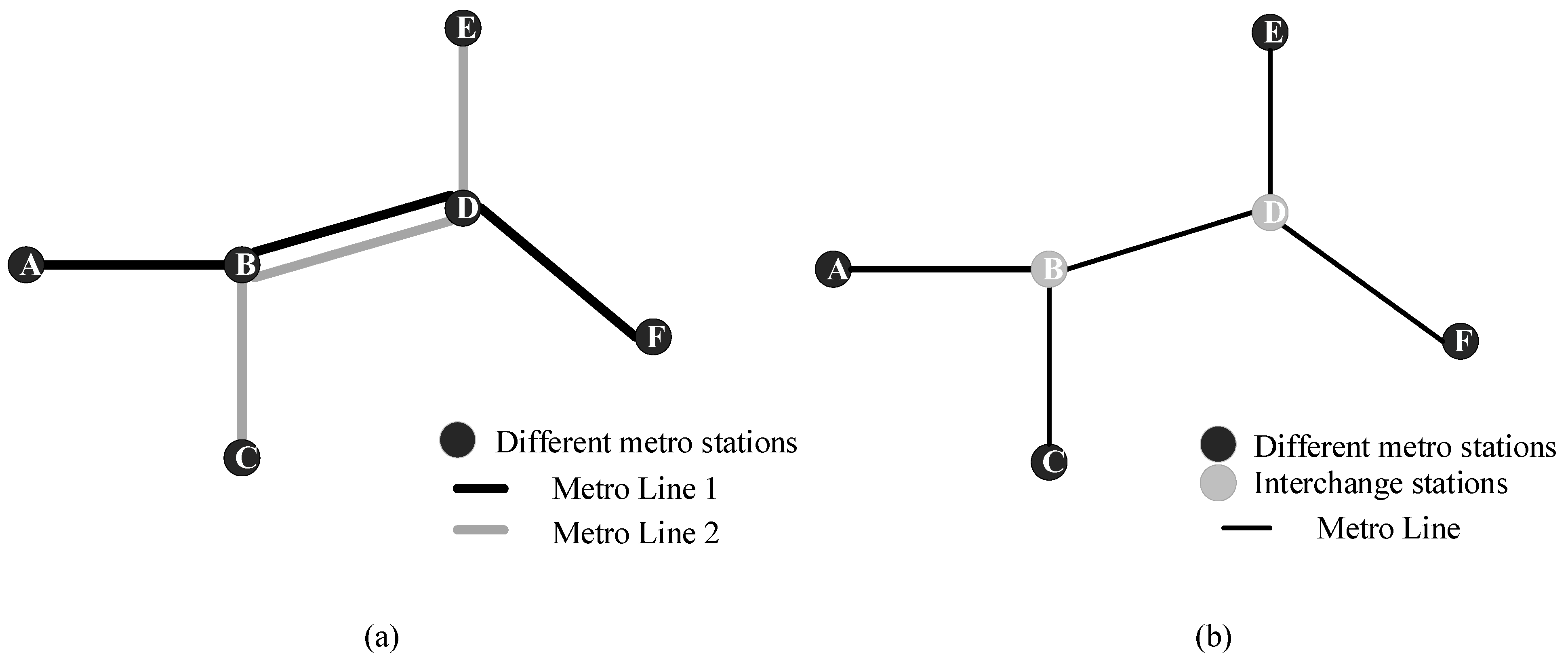
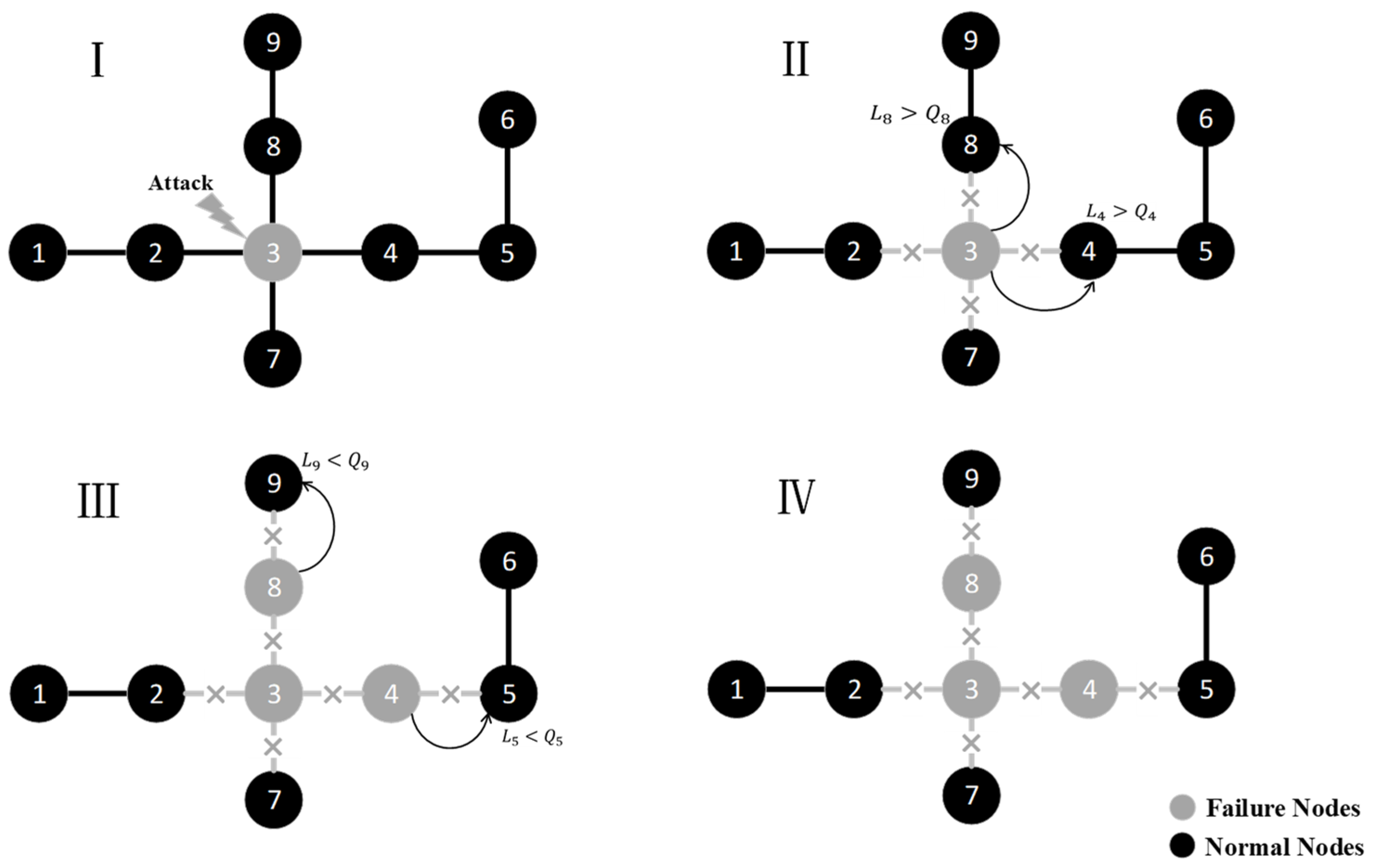
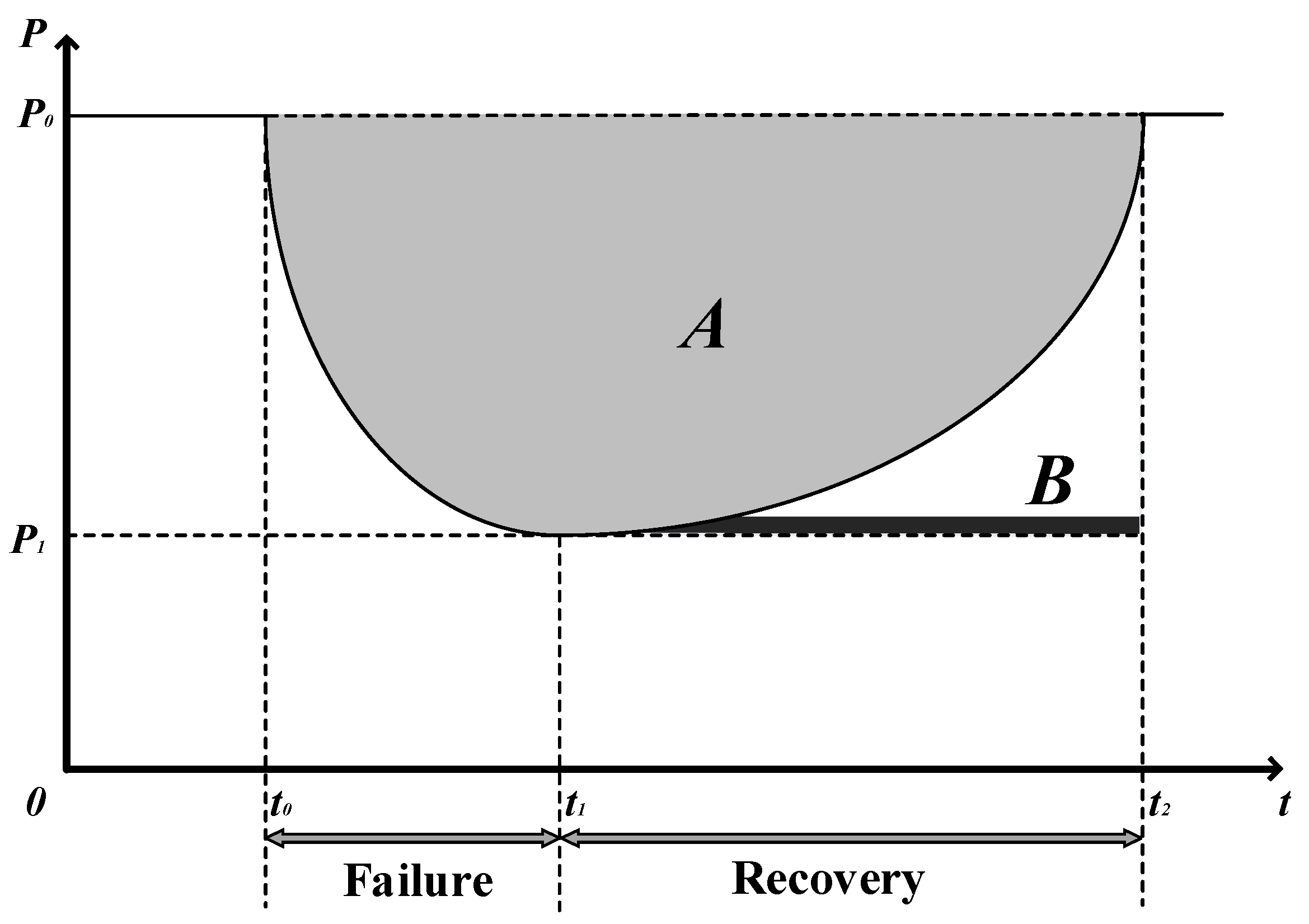
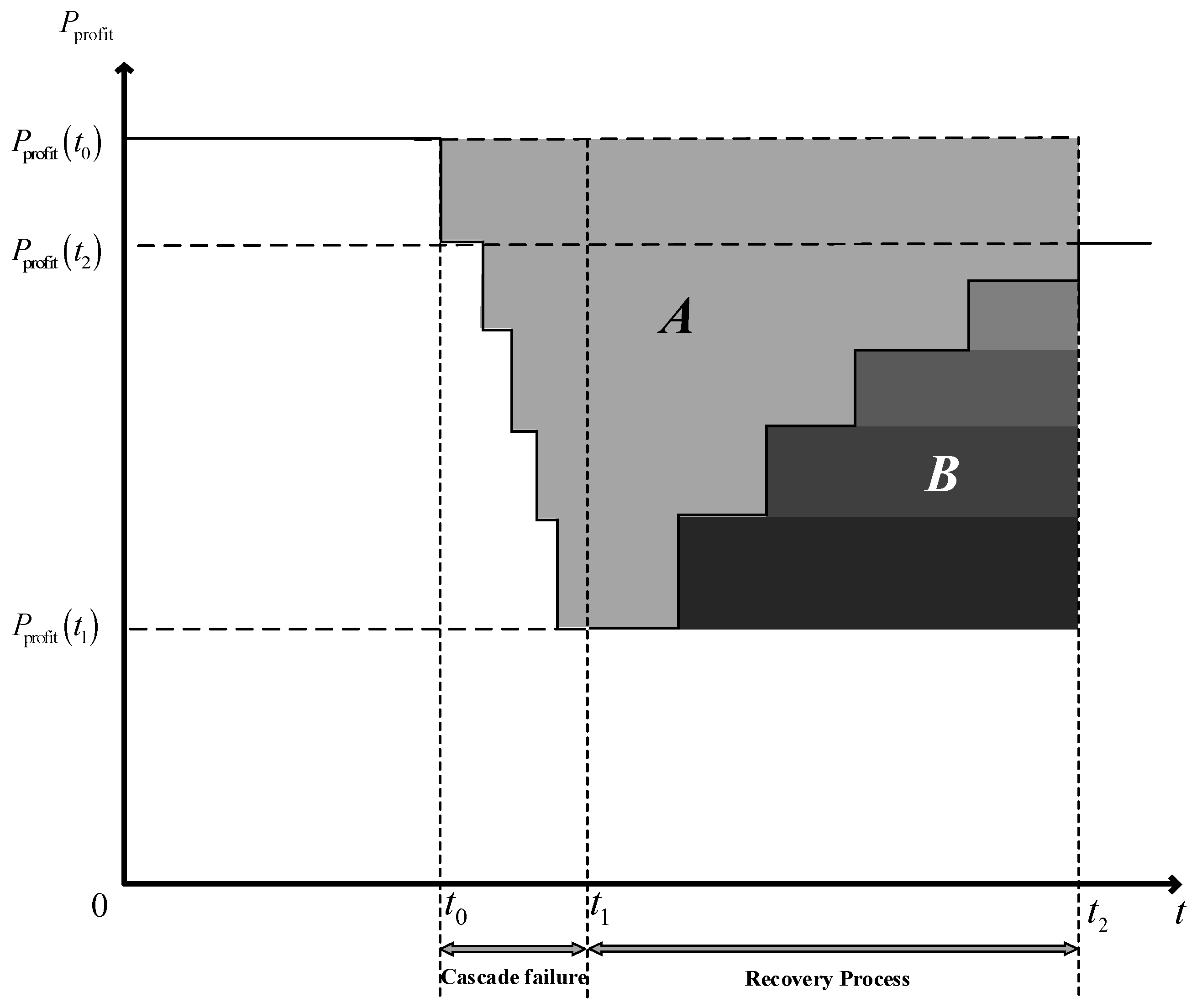

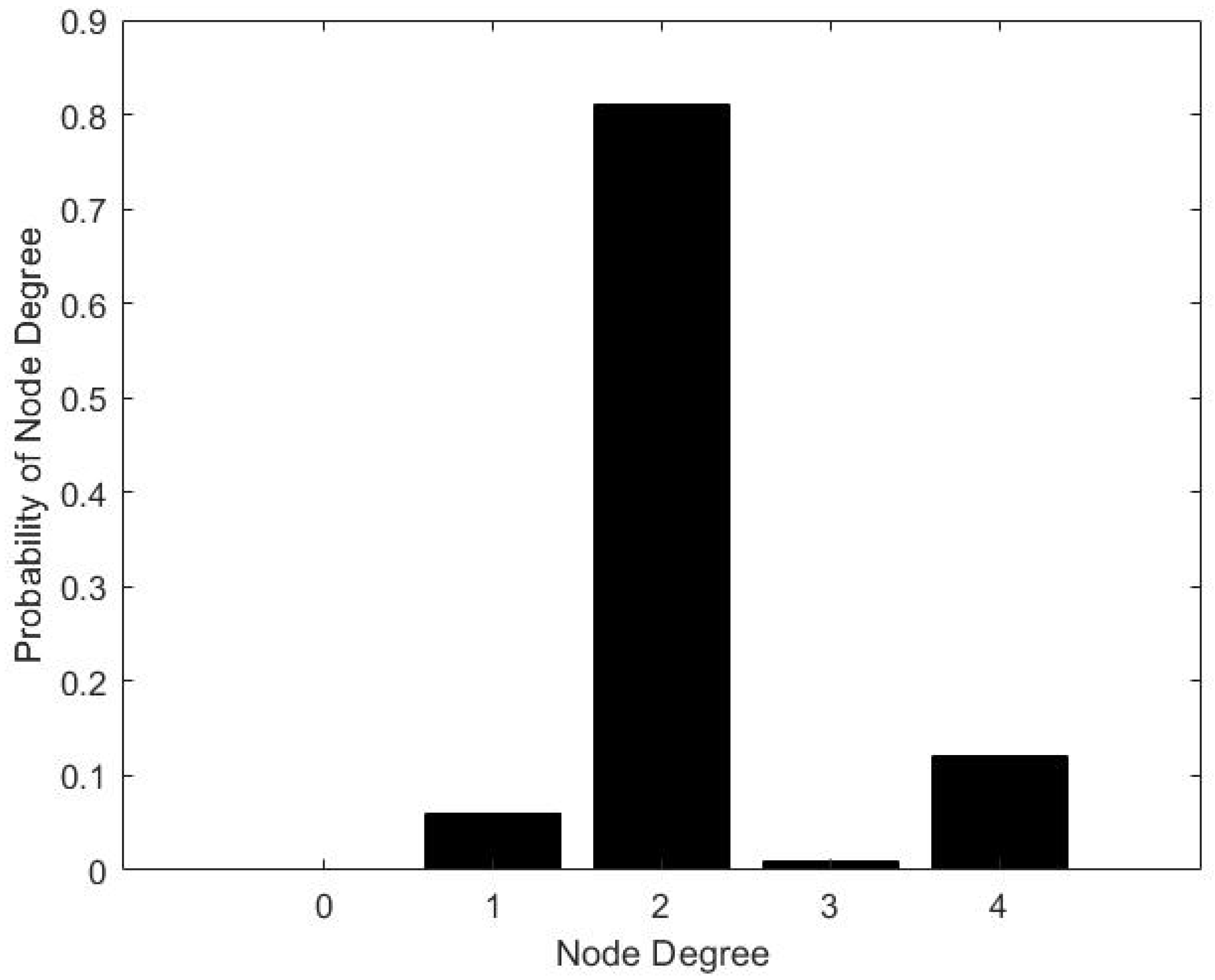
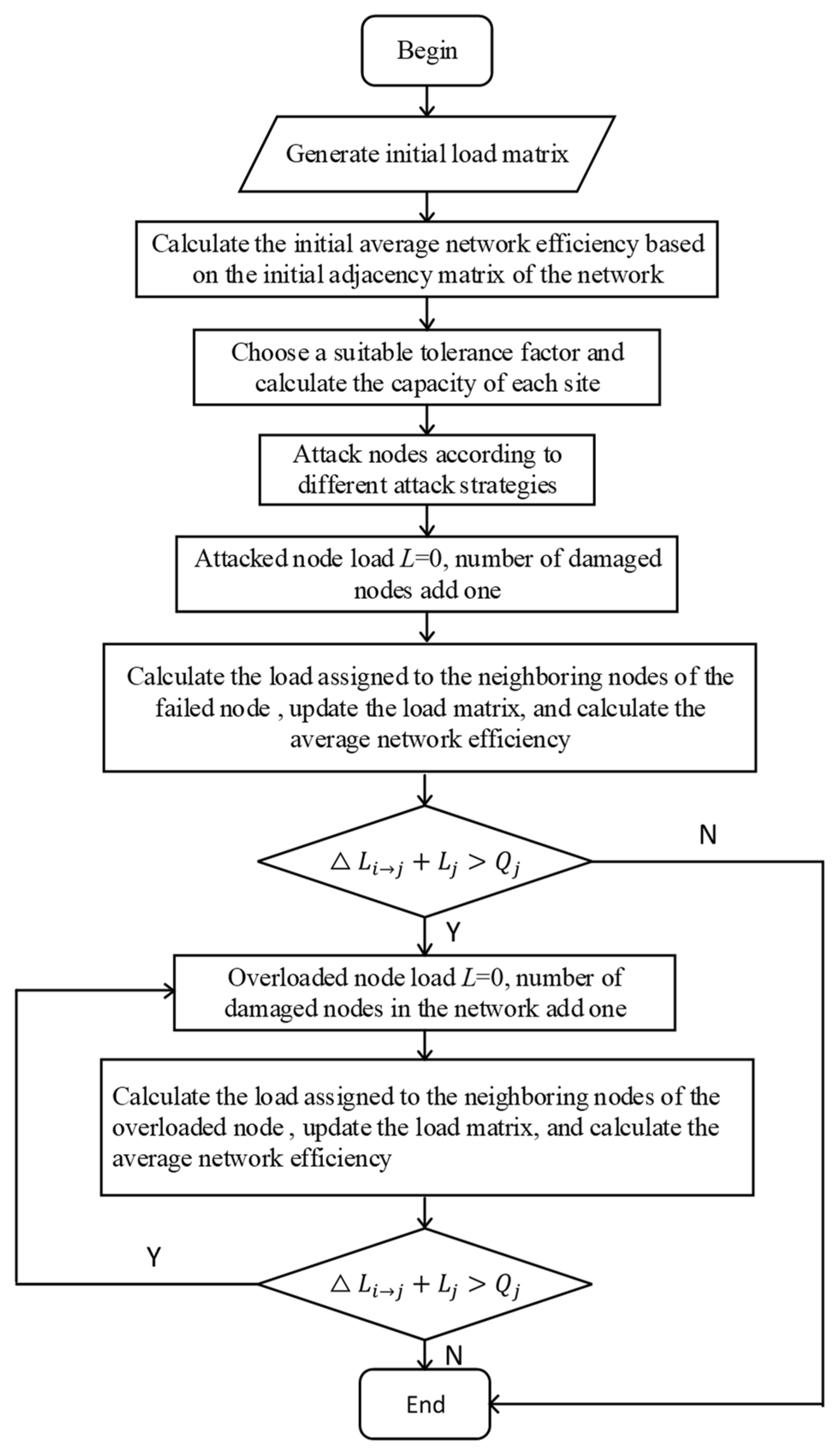



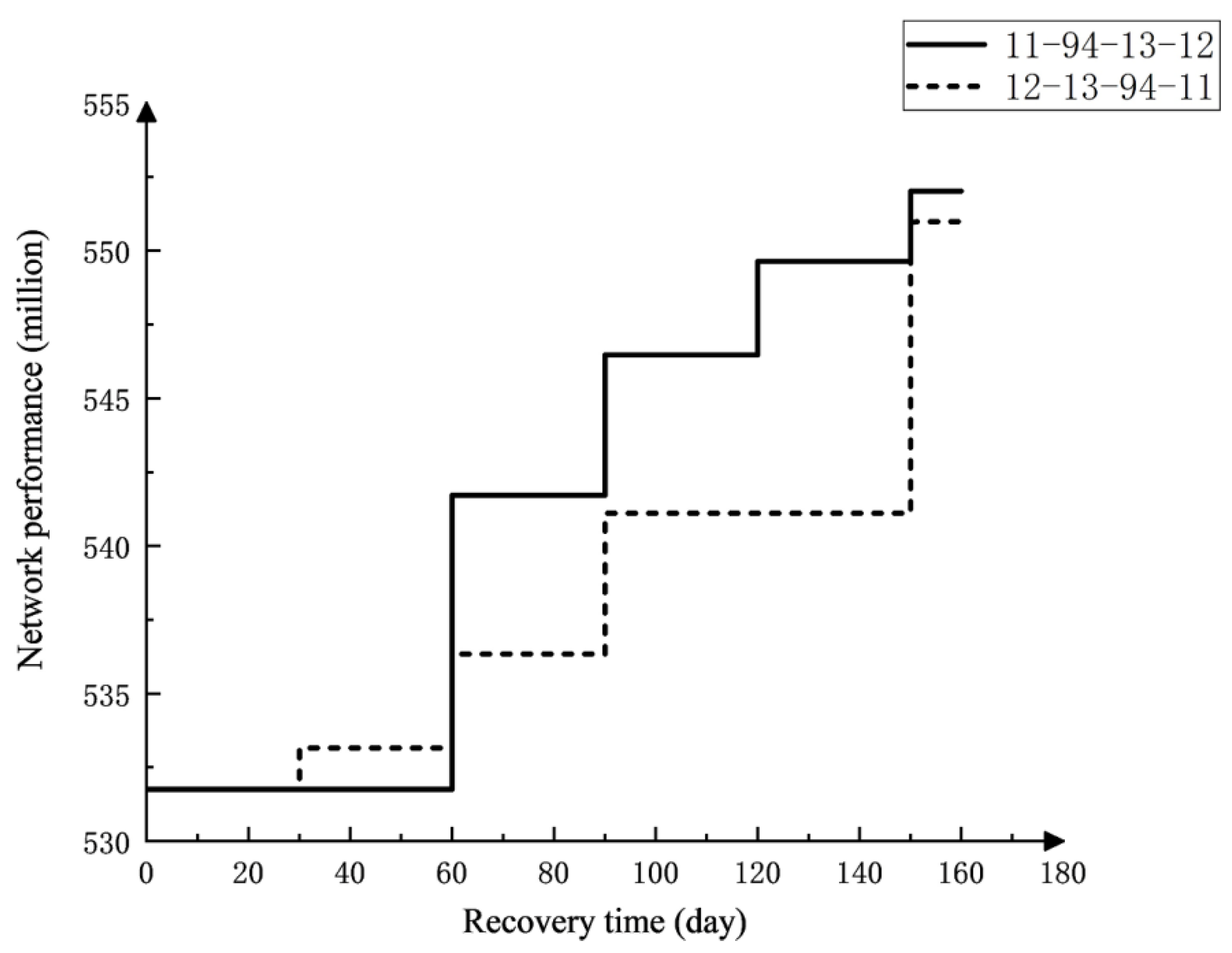
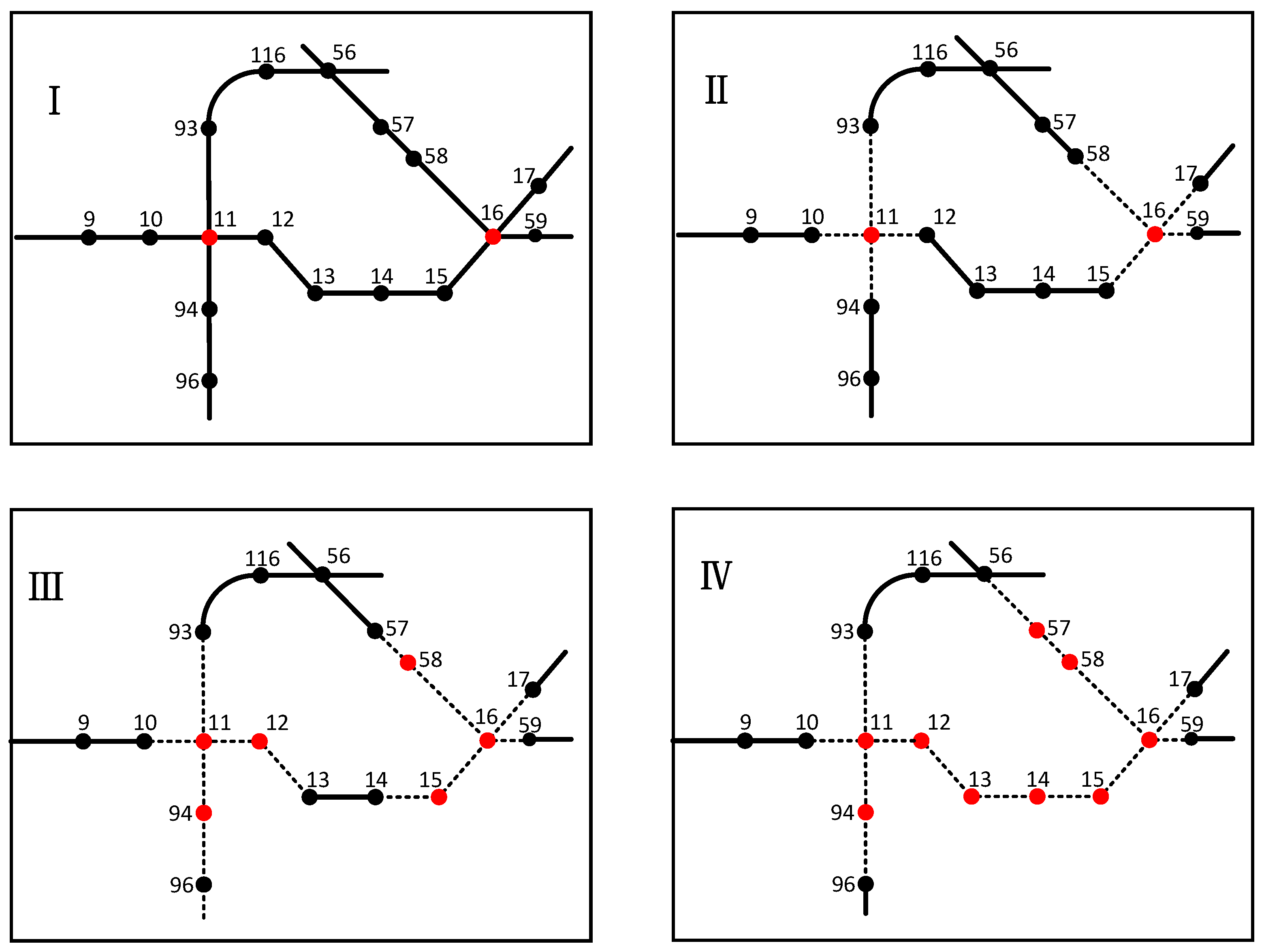
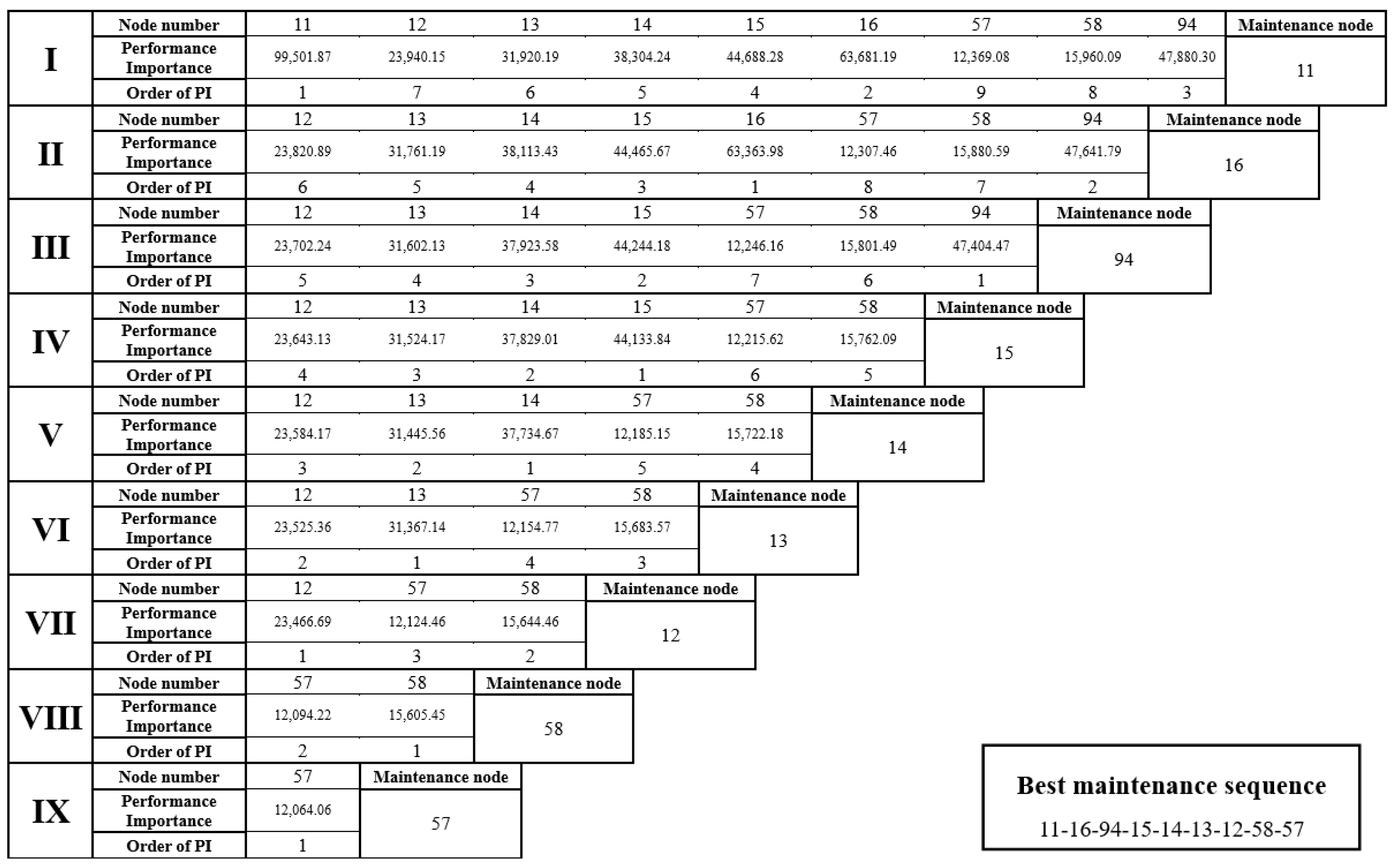
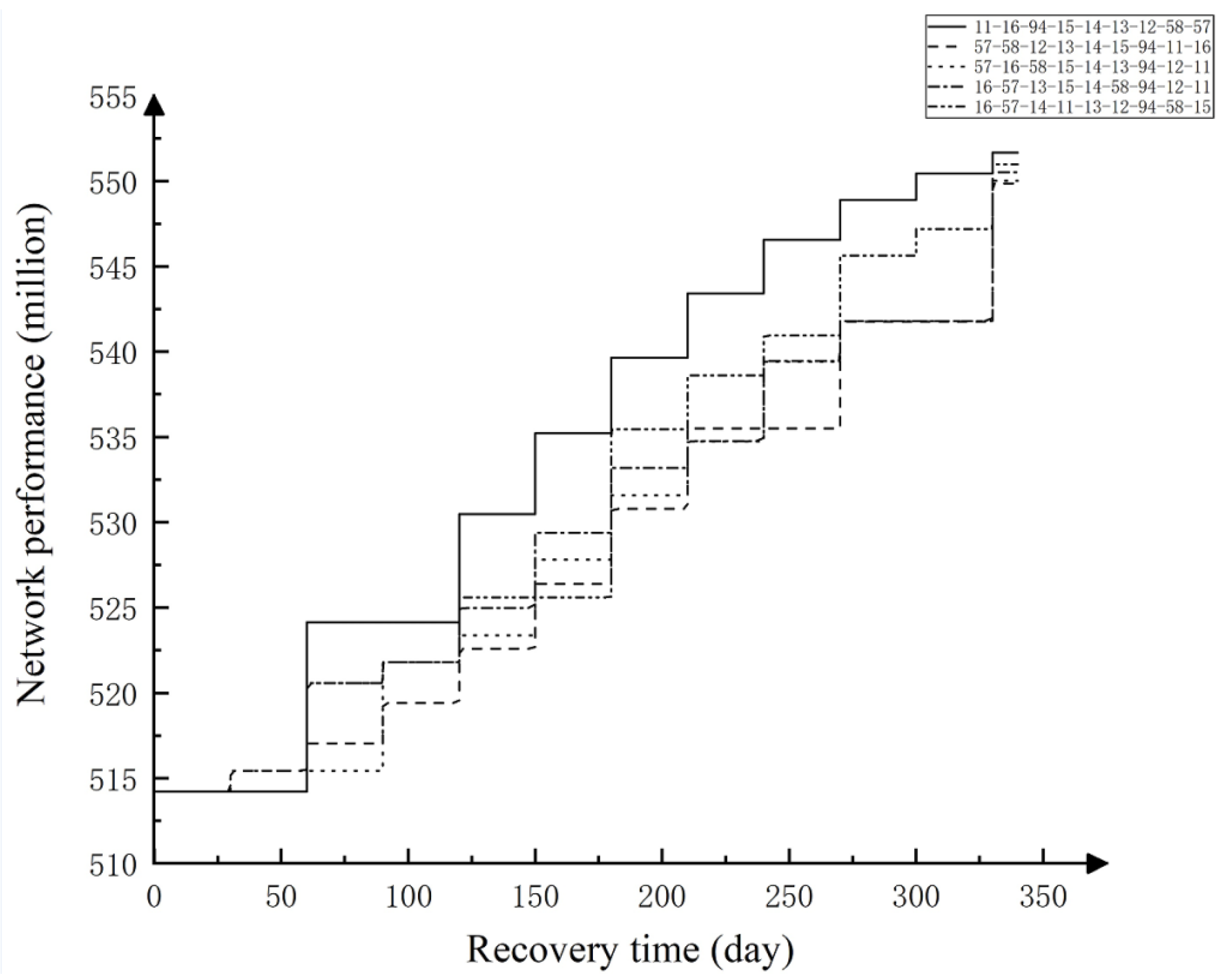
| Metro Lines | Number of Stations |
|---|---|
| Zhengzhou Metro Line 1 | 30 |
| Zhengzhou Metro Line 2 | 22 |
| Zhengzhou Metro Line 3 | 21 |
| Zhengzhou Metro Line 4 | 27 |
| Zhengzhou Metro Line 5 | 32 |
| Zhengzhou Metro Suburban Line | 15 |
| Network Characteristics | Zhengzhou Metro Network |
|---|---|
| Number of nodes | 116 |
| Number of connected lines | 127 |
| Average node degree | 2.1897 |
| Average path length | 10.2157 |
| Network Diameter | 32 |
Publisher’s Note: MDPI stays neutral with regard to jurisdictional claims in published maps and institutional affiliations. |
© 2022 by the authors. Licensee MDPI, Basel, Switzerland. This article is an open access article distributed under the terms and conditions of the Creative Commons Attribution (CC BY) license (https://creativecommons.org/licenses/by/4.0/).
Share and Cite
Dui, H.; Yang, Y.; Zhang, Y.-a.; Zhu, Y. Recovery Analysis and Maintenance Priority of Metro Networks Based on Importance Measure. Mathematics 2022, 10, 3989. https://doi.org/10.3390/math10213989
Dui H, Yang Y, Zhang Y-a, Zhu Y. Recovery Analysis and Maintenance Priority of Metro Networks Based on Importance Measure. Mathematics. 2022; 10(21):3989. https://doi.org/10.3390/math10213989
Chicago/Turabian StyleDui, Hongyan, Yuheng Yang, Yun-an Zhang, and Yawen Zhu. 2022. "Recovery Analysis and Maintenance Priority of Metro Networks Based on Importance Measure" Mathematics 10, no. 21: 3989. https://doi.org/10.3390/math10213989
APA StyleDui, H., Yang, Y., Zhang, Y.-a., & Zhu, Y. (2022). Recovery Analysis and Maintenance Priority of Metro Networks Based on Importance Measure. Mathematics, 10(21), 3989. https://doi.org/10.3390/math10213989






